Effect of Hot Isostatic Pressing on Microstructures and Mechanical Properties of Ti6Al4V Fabricated by Electron Beam Melting
Abstract
1. Introduction
2. Materials and Methods
2.1. Materials and Fabrication Methods
2.2. Characterization
3. Results
4. Discussion
Author Contributions
Funding
Acknowledgments
Conflicts of Interest
References
- Dutta, B.; Froes, F.H. Additive manufacturing of titanium alloys. Adv. Mater. Process. 2014, 172, 18–23. [Google Scholar]
- Qian, M.; Bourell, D.L. Additive manufacturing of titanium alloys. JOM 2017, 69, 2677–2678. [Google Scholar] [CrossRef]
- Attar, H.; Ehtemam-Haghighi, S.; Kent, D.; Dargusch, M.S. Recent developments and opportunities in additive manufacturing of titanium-based matrix composites: A review. Int. J. Mach. Tool Manuf. 2018, 133, 85–102. [Google Scholar] [CrossRef]
- Cansizoglu, O.; Harrysson, O.; Cormier, D.; West, H.; Mahale, T. Properties of ti-6al-4v non-stochastic lattice structures fabricated via electron beam melting. Mat. Sci. Eng. A Struct. 2008, 492, 468–474. [Google Scholar] [CrossRef]
- Zhang, L.C.; Liu, Y.J.; Li, S.J.; Hao, Y.L. Additive manufacturing of titanium alloys by electron beam melting: A review. Adv. Eng. Mater. 2018, 20, 1700842. [Google Scholar] [CrossRef]
- Facchini, L.; Magalini, E.; Robotti, P.; Molinari, A. Microstructure and mechanical properties of ti-6al-4v produced by electron beam melting of pre-alloyed powders. Rapid Prototyp. J. 2009, 15, 171–178. [Google Scholar] [CrossRef]
- Murr, L.E.; Esquivel, E.V.; Quinones, S.A.; Gaytan, S.M.; Lopez, M.I.; Martinez, E.Y.; Medina, F.; Hernandez, D.H.; Martinez, E.; Martinez, J.L.; et al. Microstructures and mechanical properties of electron beam-rapid manufactured ti-6al-4v biomedical prototypes compared to wrought ti-6al-4v. Mater. Charact. 2009, 60, 96–105. [Google Scholar] [CrossRef]
- Al-Bermani, S.S.; Blackmore, M.L.; Zhang, W.; Todd, I. The origin of microstructural diversity, texture, and mechanical properties in electron beam melted ti-6al-4v. Metall. Mater. Trans. A 2010, 41A, 3422–3434. [Google Scholar] [CrossRef]
- Safdar, A.; Wei, L.Y.; Snis, A.; Lai, Z. Evaluation of microstructural development in electron beam melted ti-6al-4v. Mater. Charact. 2012, 65, 8–15. [Google Scholar] [CrossRef]
- Gong, X.B.; Lydon, J.; Cooper, K.; Chou, K. Characterization of ti-6al-4v powder in electron beam melting additive manufacturing. Int. J. Powder Metall. 2015, 51, 25–34. [Google Scholar]
- Tang, H.P.; Qian, M.; Liu, N.; Zhang, X.Z.; Yang, G.Y.; Wang, J. Effect of powder reuse times on additive manufacturing of ti-6al-4v by selective electron beam melting. JOM 2015, 67, 555–563. [Google Scholar] [CrossRef]
- Nandwana, P.; Kirka, M.M.; Paquit, V.C.; Yoder, S.; Dehoff, R.R. Correlations between powder feedstock quality, in situ porosity detection, and fatigue behavior of ti-6al-4v fabricated by powder bed electron beam melting: A step towards qualification. JOM 2018, 70, 1686–1691. [Google Scholar] [CrossRef]
- Guo, C.; Ge, W.; Lin, F. Effects of scanning parameters on material deposition during electron beam selective melting of ti-6al-4v powder. J. Mater. Process. Technol. 2015, 217, 148–157. [Google Scholar] [CrossRef]
- Abdeen, D.H.; Palmer, B.R. Effect of processing parameters of electron beam melting machine on properties of ti-6al-4v parts. Rapid Prototyp. J. 2016, 22, 609–620. [Google Scholar] [CrossRef]
- Cunningham, R.; Narra, S.P.; Ozturk, T.; Beuth, J.; Rollett, A.D. Evaluating the effect of processing parameters on porosity in electron beam melted ti-6al-4v via synchrotron X-ray microtomography. JOM 2016, 68, 765–771. [Google Scholar] [CrossRef]
- Pushilina, N.; Syrtanov, M.; Kashkarov, E.; Murashkina, T.; Kudiiarov, V.; Laptev, R.; Lider, A.; Koptyug, A. Influence of manufacturing parameters on microstructure and hydrogen sorption behavior of electron beam melted titanium ti-6al-4v alloy. Materials 2018, 11, 763. [Google Scholar] [CrossRef]
- Maizza, G.; Caporale, A.; Polley, C.; Seitz, H. Micro-macro relationship between microstructure, porosity, mechanical properties, and build mode parameters of a selective-electron-beam-melted ti-6al-4v alloy. Metals Basel 2019, 9, 786. [Google Scholar] [CrossRef]
- Prisco, U.; Astarita, A.; El Hassanin, A.; Franchitti, S. Influence of processing parameters on microstructure and roughness of electron beam melted ti-6al-4v titanium alloy. Mater. Manuf. Process. 2019, 34, 1753–1760. [Google Scholar] [CrossRef]
- Antonysamy, A.A.; Prangnell, P.B.; Meyer, J. Influence of build geometry on beta grain structure and texture during additive layer manufacture (alm) of ti-6al-4v by electron beam selective melting. In Proceedings of the Ti-2011: 12th World Conference on Titanium, Beijing, China, 19–24 June 2011; Volume 3, pp. 1830–1834. [Google Scholar]
- Antonysamy, A.A.; Meyer, J.; Prangnell, P.B. Effect of build geometry on the β-grain structure and texture in additive manufacture of ti6al4v by selective electron beam melting. Mater. Charact. 2013, 84, 153–168. [Google Scholar] [CrossRef]
- Kok, Y.H.; Tan, X.P.; Loh, N.H.; Tor, S.B.; Chua, C.K. Geometry dependence of microstructure and microhardness for selective electron beam-melted ti-6al-4v parts. Virtual Phys. Prototy. 2016, 11, 183–191. [Google Scholar] [CrossRef]
- Hrabe, N.; Gnaupel-Herold, T.; Quinn, T. Fatigue properties of a titanium alloy (ti-6al-4v) fabricated via electron beam melting (ebm): Effects of internal defects and residual stress. Int. J. Fatigue 2017, 94, 202–210. [Google Scholar] [CrossRef]
- Chern, A.H.; Nandwana, P.; Yuan, T.; Kirka, M.M.; Dehoff, R.R.; Liaw, P.K.; Duty, C.E. A review on the fatigue behavior of ti-6al-4v fabricated by electron beam melting additive manufacturing. Int. J. Fatigue 2019, 119, 173–184. [Google Scholar] [CrossRef]
- Lu, S.L.; Tang, H.P.; Ning, Y.P.; Liu, N.; Stjohn, D.H.; Qian, M. Microstructure and mechanical properties of long ti-6al-4v rods additively manufactured by selective electron beam melting out of a deep powder bed and the effect of subsequent hot isostatic pressing. Metall. Mater. Trans. A 2015, 46A, 3824–3834. [Google Scholar] [CrossRef]
- Lu, S.L.; Tang, H.P.; Nai, S.M.L.; Sun, Y.Y.; Wang, P.; Wei, J.; Qian, M. Intensified texture in selective electron beam melted ti-6al-4v thin plates by hot isostatic pressing and its fundamental influence on tensile fracture and properties. Mater. Charact. 2019, 152, 162–168. [Google Scholar] [CrossRef]
- Tammas-Williams, S.; Withers, P.J.; Todd, I.; Prangnell, P.B. The effectiveness of hot isostatic pressing for closing porosity in titanium parts manufactured by selective electron beam melting. Metall. Mater. Trans. A 2016, 47A, 1939–1946. [Google Scholar] [CrossRef]
- Wang, J.; Tang, H.P.; Yang, K.; Liu, N.; Jia, L.; Qian, M. Selective electron beam manufacturing of ti-6al-4v strips: Effect of build orientation, columnar grain orientation, and hot isostatic pressing on tensile properties. JOM 2018, 70, 638–643. [Google Scholar] [CrossRef]
- Hernandez-Nava, E.; Mahoney, P.; Smith, C.J.; Donoghue, J.; Todd, I.; Tammas-Williams, S. Additive manufacturing titanium components with isotropic or graded properties by hybrid electron beam melting/hot isostatic pressing powder processing. Sci. Rep. 2019, 9, 4070. [Google Scholar] [CrossRef]
- Persenot, T.; Martin, G.; Dendievel, R.; Buffiere, J.Y.; Maire, E. Enhancing the tensile properties of ebm as-built thin parts: Effect of hip and chemical etching. Mater. Charact. 2018, 143, 82–93. [Google Scholar] [CrossRef]
- Khrapov, D.; Koptyug, A.; Manabaev, K.; Leonard, F.; Mishurova, T.; Bruno, G.; Cheneler, D.; Loza, K.; Epple, M.; Surmenev, R.; et al. The impact of post manufacturing treatment of functionally graded ti6al4v scaffolds on their surface morphology and mechanical strength. J. Mater. Res. Technol. 2020, 9, 1866–1881. [Google Scholar] [CrossRef]
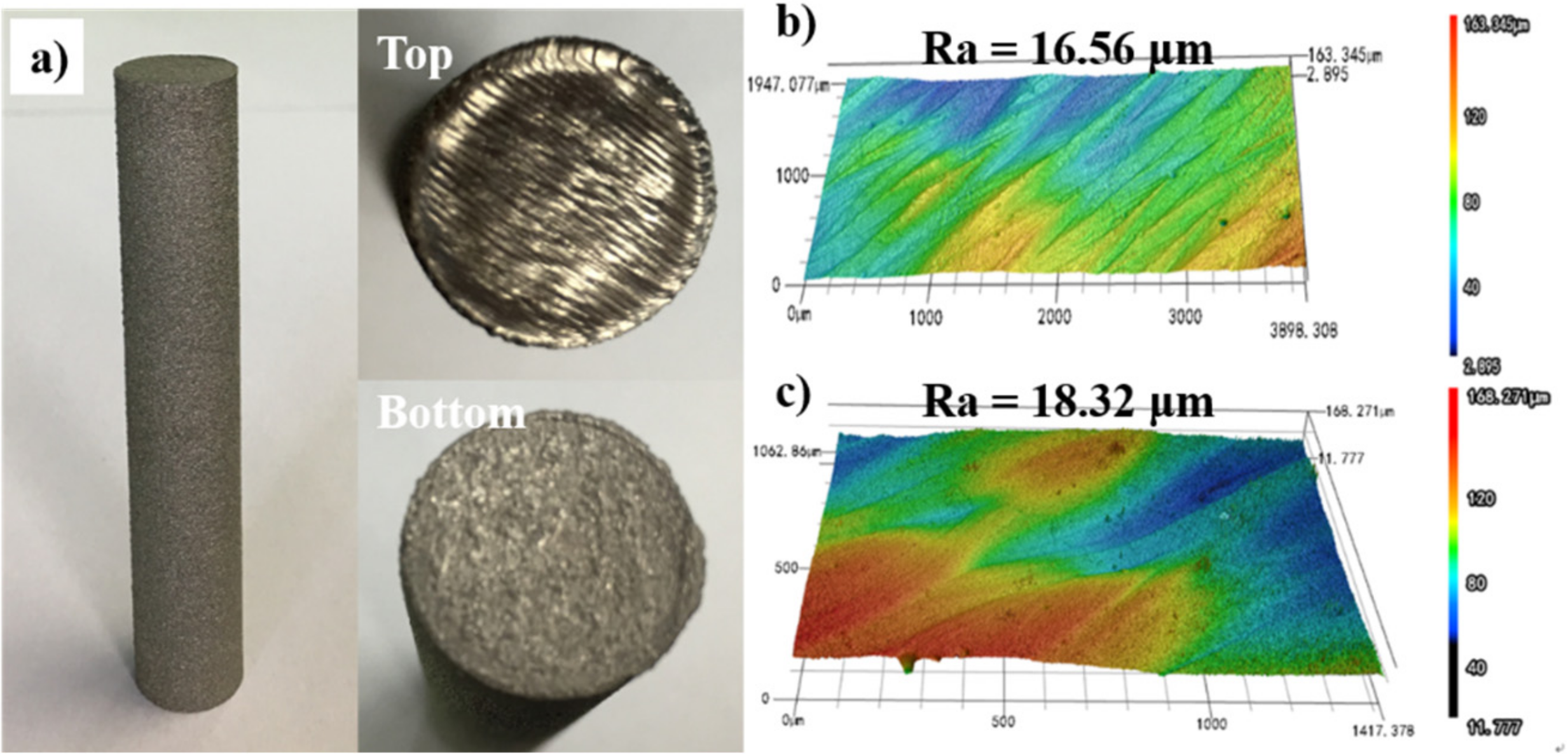
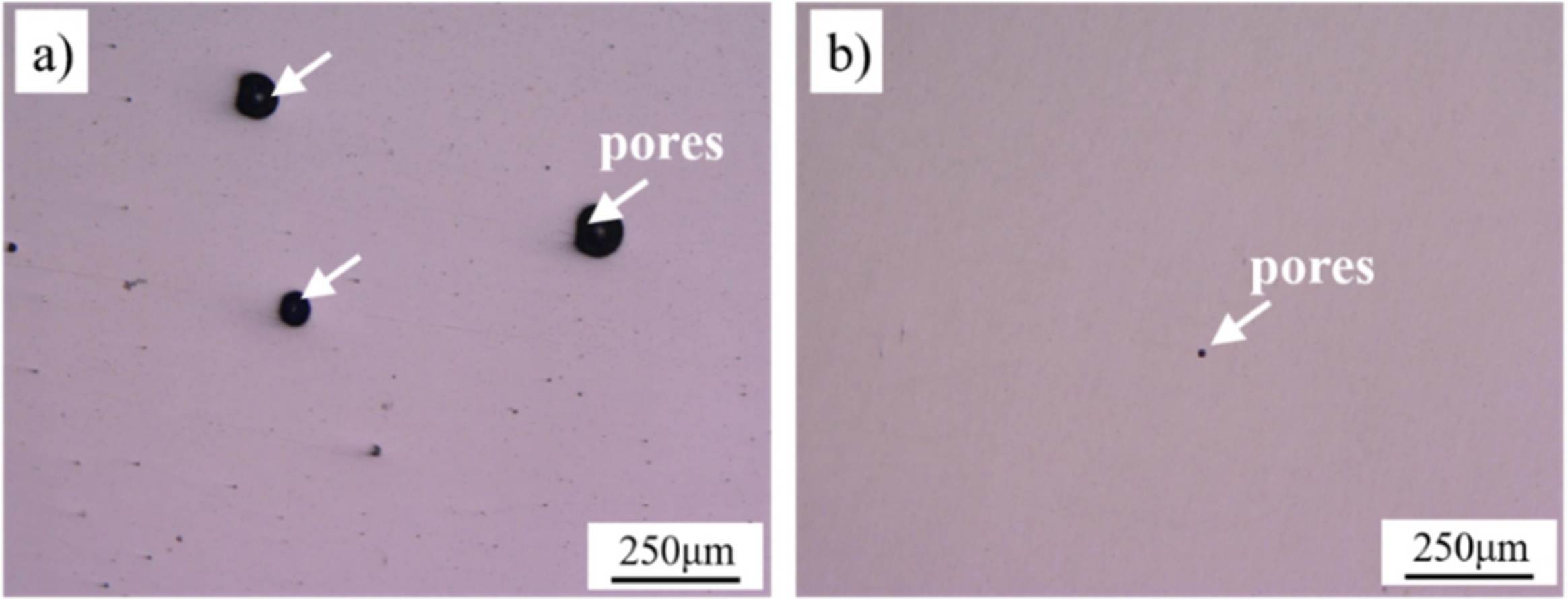
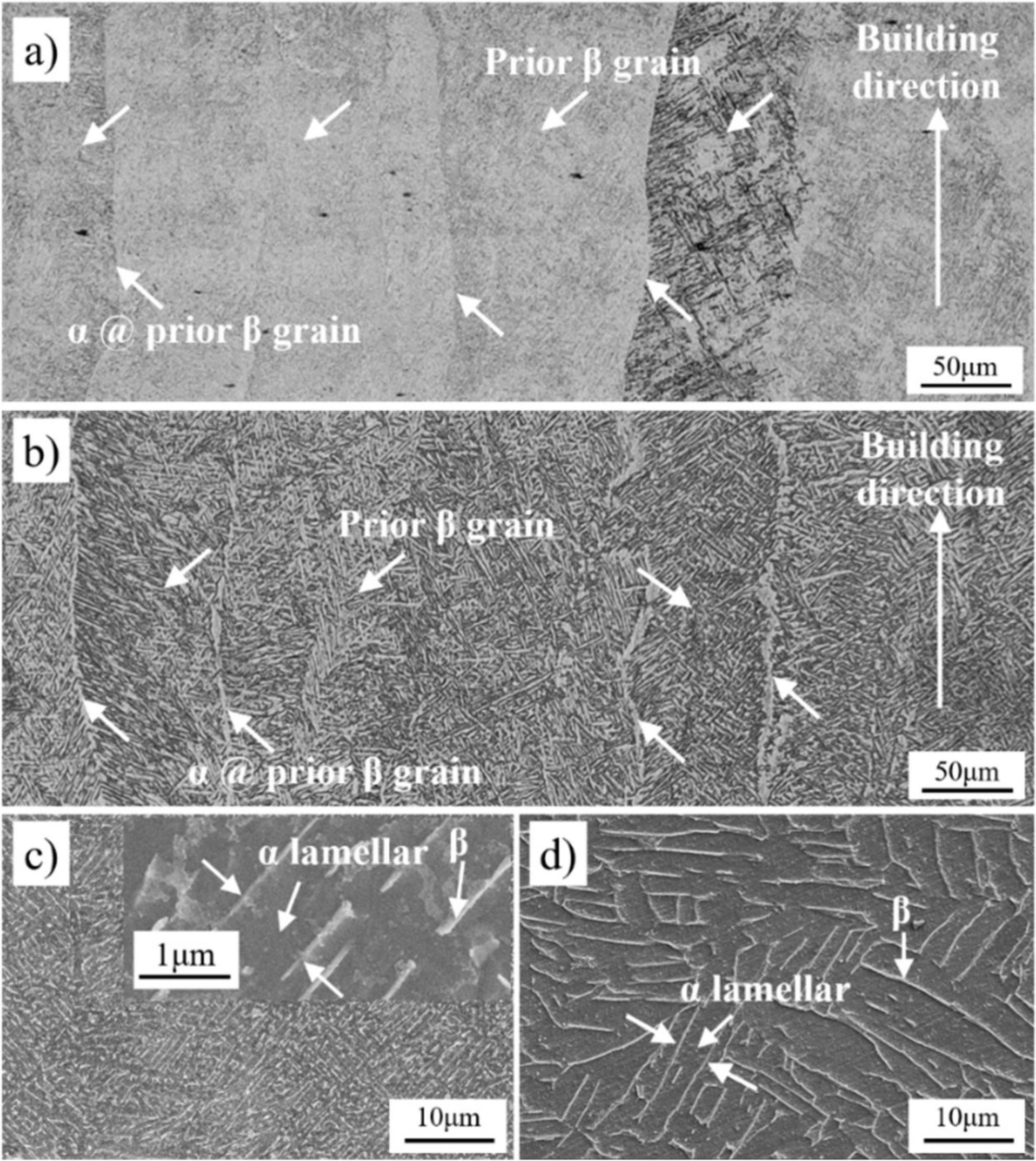
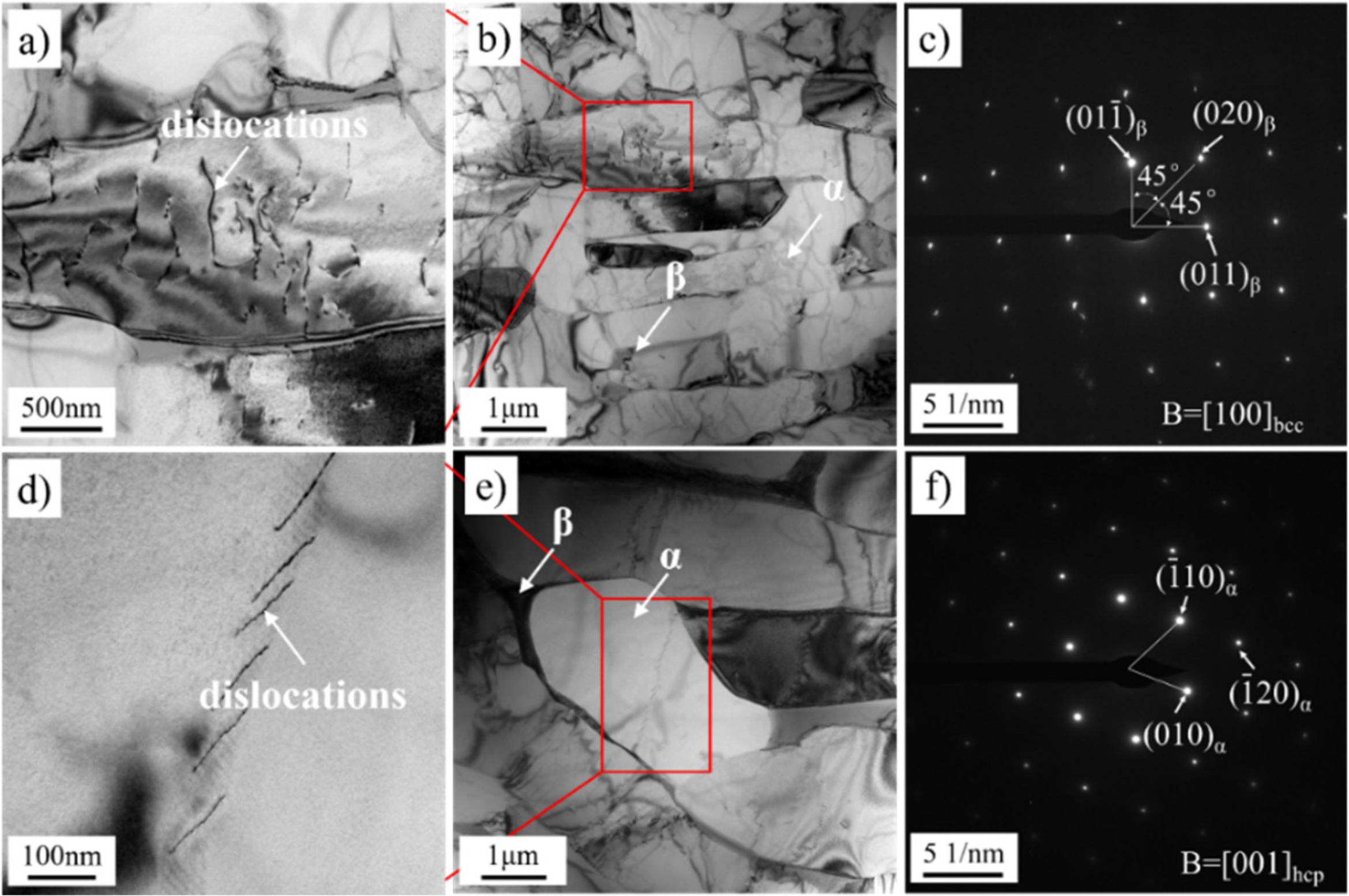
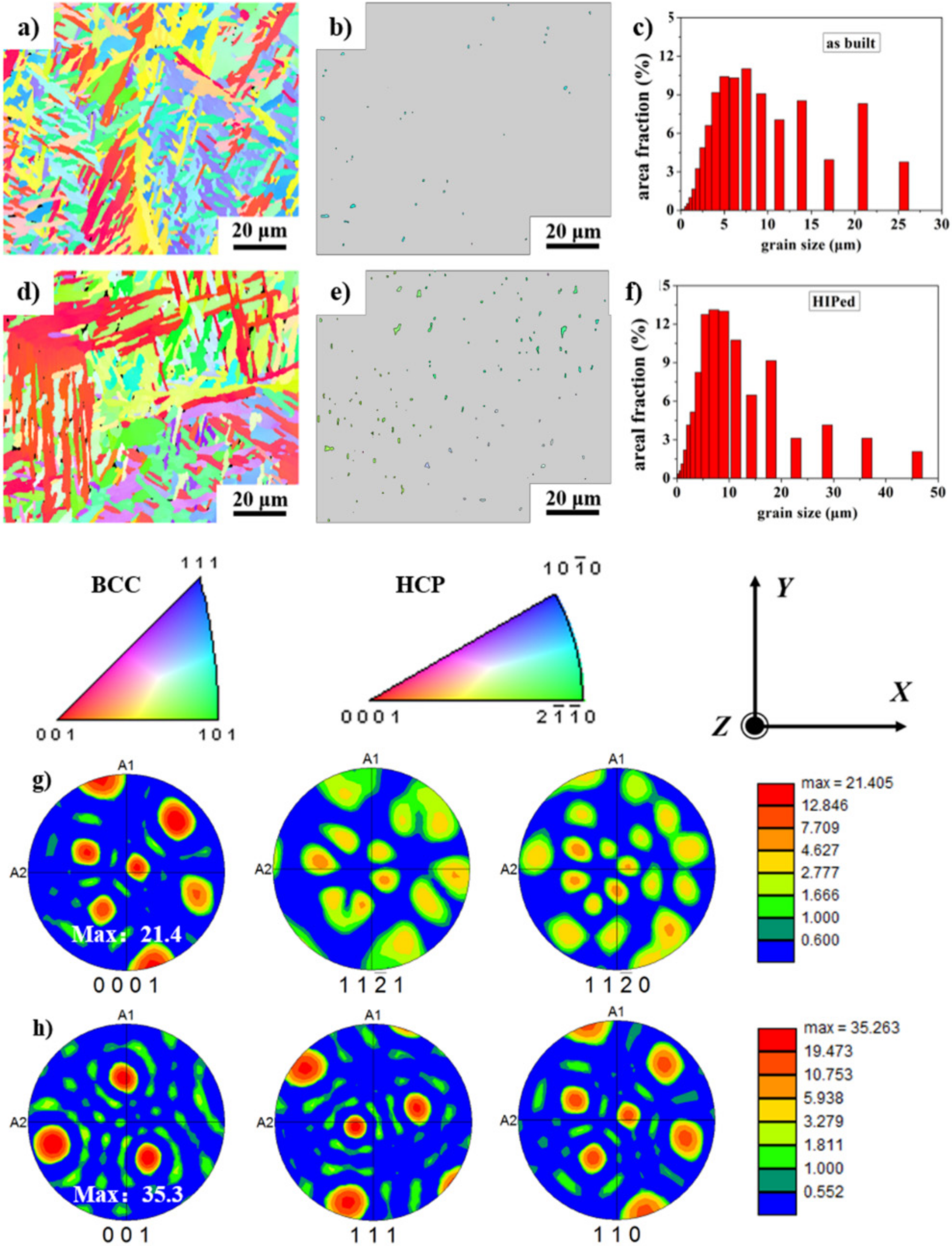
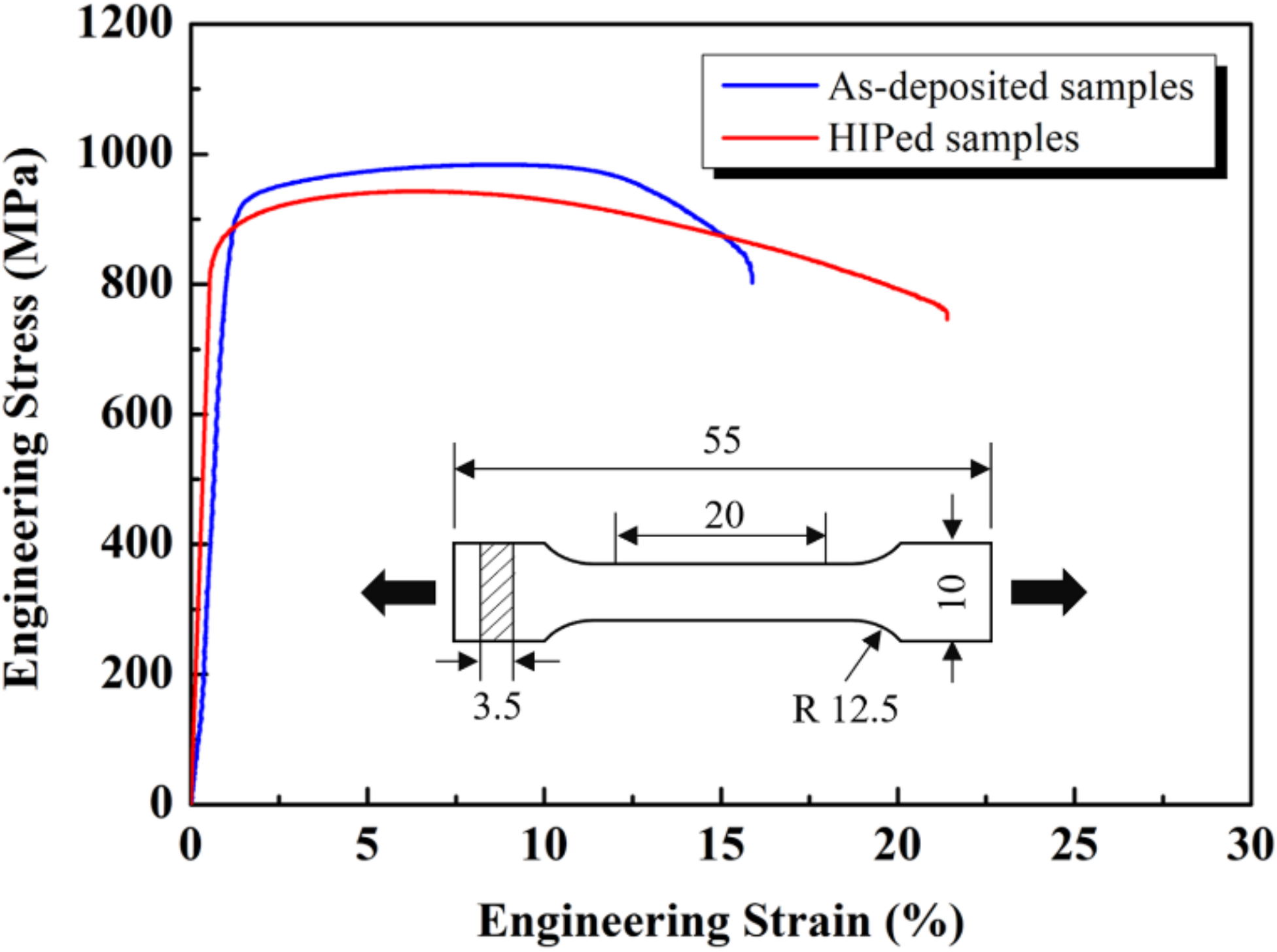

| Element | Ti | Al | V | Fe | C | O | H | N |
|---|---|---|---|---|---|---|---|---|
| Composition (wt.%) | Balance | 6.42 | 4.13 | 0.18 | 0.01 | 0.09 | 0.003 | 0.02 |
© 2020 by the authors. Licensee MDPI, Basel, Switzerland. This article is an open access article distributed under the terms and conditions of the Creative Commons Attribution (CC BY) license (http://creativecommons.org/licenses/by/4.0/).
Share and Cite
Liu, C.; Mai, Z.; Yan, D.; Jiang, M.; Dai, Y.; Wang, P.; Chen, Z.; Lao, C. Effect of Hot Isostatic Pressing on Microstructures and Mechanical Properties of Ti6Al4V Fabricated by Electron Beam Melting. Metals 2020, 10, 593. https://doi.org/10.3390/met10050593
Liu C, Mai Z, Yan D, Jiang M, Dai Y, Wang P, Chen Z, Lao C. Effect of Hot Isostatic Pressing on Microstructures and Mechanical Properties of Ti6Al4V Fabricated by Electron Beam Melting. Metals. 2020; 10(5):593. https://doi.org/10.3390/met10050593
Chicago/Turabian StyleLiu, Changyong, Zhuokeng Mai, Deng Yan, Mingguang Jiang, Yuhong Dai, Pei Wang, Zhangwei Chen, and Changshi Lao. 2020. "Effect of Hot Isostatic Pressing on Microstructures and Mechanical Properties of Ti6Al4V Fabricated by Electron Beam Melting" Metals 10, no. 5: 593. https://doi.org/10.3390/met10050593
APA StyleLiu, C., Mai, Z., Yan, D., Jiang, M., Dai, Y., Wang, P., Chen, Z., & Lao, C. (2020). Effect of Hot Isostatic Pressing on Microstructures and Mechanical Properties of Ti6Al4V Fabricated by Electron Beam Melting. Metals, 10(5), 593. https://doi.org/10.3390/met10050593





